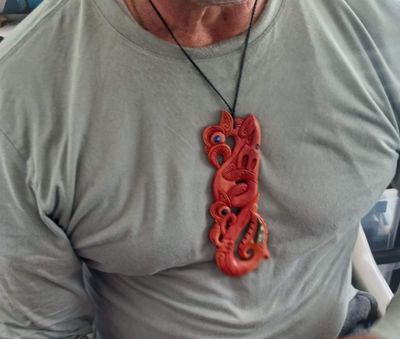
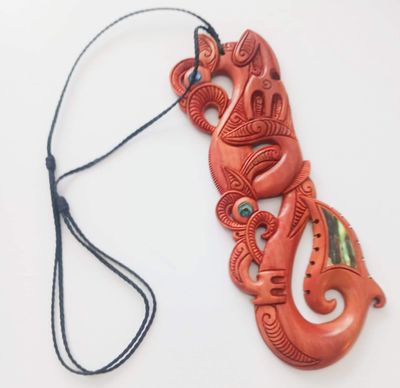
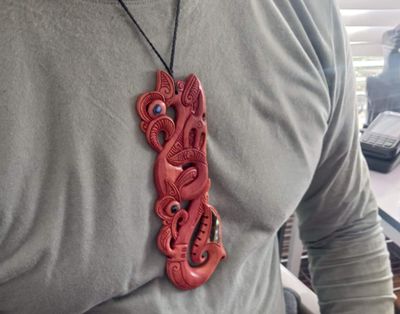
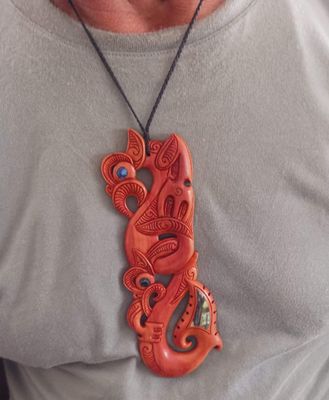
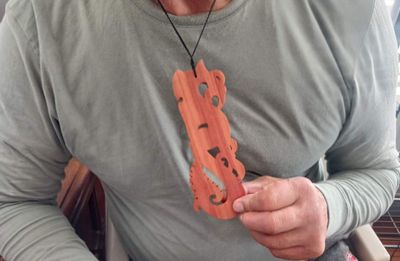
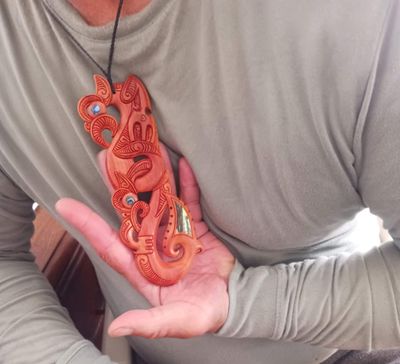
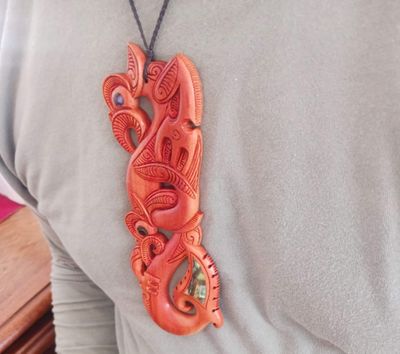
Wooden Manaia large Paua shell inlay necklace
$280.00
Measurement: 190 mm or 19 cm length by 60 mm width.
Black plaited wax cord adjustable to size.
Packaging: black leather bound box with white inner pad.
The wooden Manaia is a deeply spiritual and protective symbol in Māori culture, often carved from native woods. It combines powerful elements of the natural and spiritual worlds, and is used in both wearable taonga (pendants) and architectural carvings such as wharenui (meeting houses) and pou (carved posts).
The Manaia is a mythological being, often depicted with:
The head of a bird (spirit realm)
The body of a man (human world)
The tail of a fish (ocean/underworld)
This form symbolizes a bridge between worlds — sky, land, and sea — and reflects the Māori worldview of interconnected realms.
Spiritual Meaning of a Wooden Manaia
Guardian and Protector
The Manaia is seen as a Kaitiaki (guardian) that wards off evil spirits and harmful energies.
Often worn or placed as a protective force, especially for homes, Whānau, and sacred spaces.
Balance of Life Forces
The bird-man-fish form represents the balance between the spiritual and physical worlds.
It guides the wairua (spirit) between Te Ao (the world of light) and Te Pō (the realm of darkness).
Messenger Between Worlds
The Manaia is also a spiritual messenger, believed to carry prayers or thoughts between realms — to ancestors or atua (spiritual beings).
Connection to Nature
When carved from wood, the Manaia embodies the mauri (life force) of the tree it came from, emphasizing the living connection between the taonga and Papatūānuku (Earth Mother).
Cultural Uses of Wooden Manaia
Worn as pendants for spiritual protection and guidance.
Carved into waka, marae, and tokotoko (speaking staffs) to protect leaders and their kōrero.
Given as gifts to honor leadership, wisdom, or the spiritual role of the wearer.
In Summary:
The wooden Manaia is a sacred guardian symbol, connecting the spiritual and physical realms. It embodies protection, balance, guidance, and ancestral strength — especially when carved from native trees that hold their own mauri.